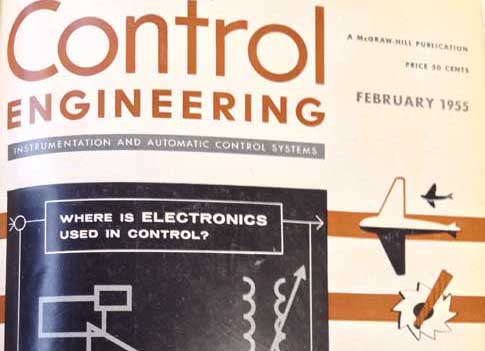Data collecting and processing in automation industries was as much a challenge in 1955 as it is today. What lessons learned in 1955 can we apply to 2014?

Happy 60th, Control Engineering! Our magazine first published in September 1954. This monthly column in 2014 will resurrect some of our favorite material from the 1954 and 1955 issues. Technologies have progressed, but they continue to pave the way for today’s innovations.
As far as department store buyers are concerned, this equipment is just a medium-high-priced cash register with a few extra features. But these features are important: all data relative to the sale (price, clerk number, tax, department, etc.) are automatically recorded on punched tape at the time of the sale. Of almost equal importance is the fact that most of this information is automatically fed into the system, including the cash register’s sales receipt, by a punched price tag. The clerk must manually include her number and other information peculiar to that particular sale, but price and inventory data are entered almost instantaneously with the insertion of the tag into the reader. With this feature, Telecomputing Corp. has a product attractive to a very dollars-and-cents-conscious market.
Bonus inputs
Its ability to integrate with a computer-operated accounting system is offered almost as a bonus. At present, purchasers must have punched card equipment to use effectively the punched tape record produced by the “Point O’Sale” units shown in the figure via tape-to-card converters.
This restricts the market for Telecomputing to rather large organizations, but retailers of the “minimum” size exist in numbers of at least a few thousand in the United States today.
Telecomputing’s concern is primarily with data handling. They see the need for input mechanisms to automatic-control and data-processing devices as having parallel importance to the development of the computers and systems themselves. Perhaps they are using a “foot in the door” approach by first introducing equipment that economically stands on its own feet, and yet clearly forms the foundation of possibly extensive control systems. The significance of introducing control systems bit by bit rather than as a costly and employee-upsetting systems earthquake is worth noting.
-2014 edits by Jordan M. Schultz, associate content manager, Control Engineering, [email protected]



